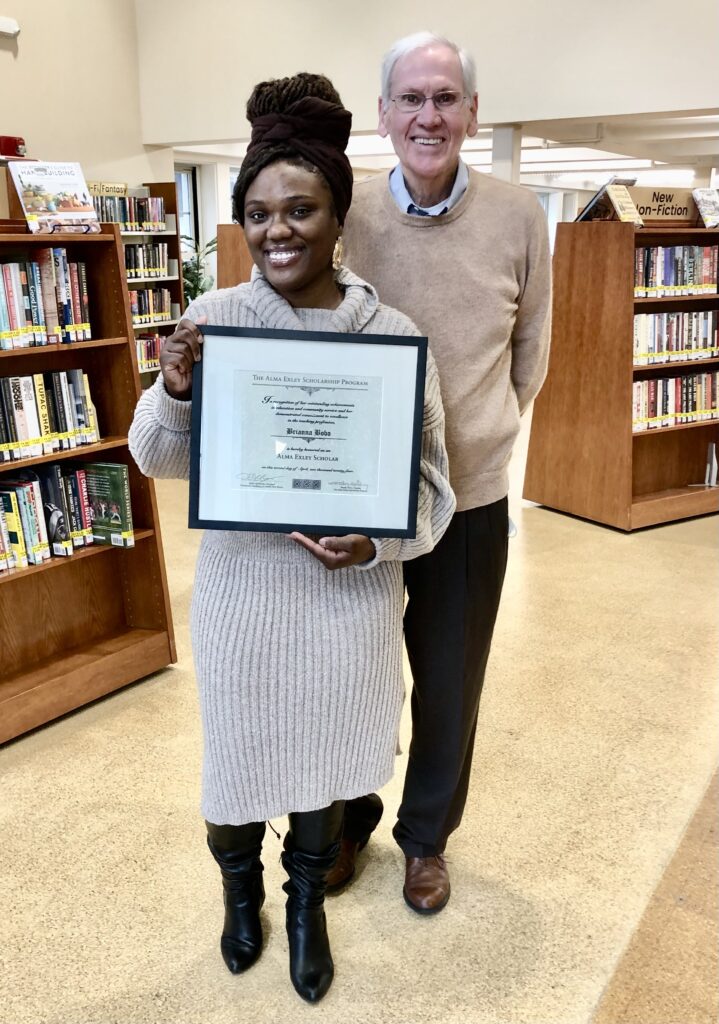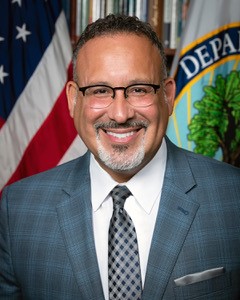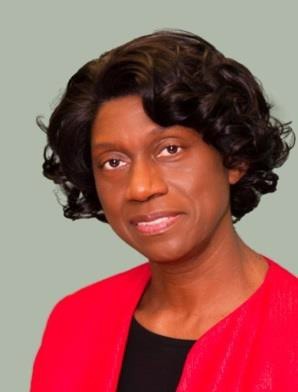
Violet Jiménez Sims and Orlando Valentin Jr. took different career paths after being honored by the Alma Exley Scholarship Program in 2008 and 2016, respectively.
Their divergent paths crossed recently at the annual gala of the Connecticut Association of Latino Administrators and Superintendents (CALAS) in Southington, Connecticut. The organization awarded five scholarships and honored seven educational leaders.
Dr. Sims began her career as a high school teacher and administrator before earning her doctorate and joining the faculty of the Neag School of Education at the University of Connecticut. Now she is Managing Director of Academic Programs for the Connecticut Teacher Residency Program, one of the state’s initiatives to promote educator diversity.
Mr. Valentin began as a fourth-grade teacher before moving into leadership as Assistant Principal at Hanover Elementary School in Meriden. He is also an equity leader for schools in the Meriden region, and he champions efforts to recruit and retain educators of color in the Meriden schools.
“It was a pleasure to celebrate with Orlando,” said Dr. Sims, “and it’s gratifying to be part of an organization that supports and encourages promising Latino students and recognizes the accomplishments of Latino educational leaders across the state.”
Said Mr. Valentin, “I was delighted to catch up with Violet and learn about her work in promoting educator diversity through the Teacher Residency Program. And I was pleased to support the great work that CALAS is doing to recognize excellence among Latino students and professionals.”
Mr. Valentin and Dr. Sims are both married to educators. Tatiana Valentin is a third-grade bilingual teacher in Meriden. D’Andre Sims is a recruitment specialist with the New Britain Schools. Together, Violet and D’Andre own Sims Squared LLC, an educational consulting enterprise.
Scholarships and Awards
CALAS honored the following with scholarships:
- Nicole Montalvo, a student at Waterbury Arts Magnet High School.
- Ivanny Penn Mateo, a student at Platt High School in Meriden.
- Lavinnia Nazareth a student at Central Connecticut State University.
- Adalbyse Gonzalez a student at University of Saint Joseph.
- Rocio Tinoco, a bilingual educator at Bennie Dover Jackson Middle School in New London, who is pursuing a degree in educational leadership at UConn.
Seven awards were presented for professional excellence.
- Exceptional Teacher Award: Carmen Pagán, a bilingual teacher at Moriarty Elementary School in Norwich.
- Policy Advocate Award: Fran Rabinowitz, executive director, Connecticut Association of Public School Superintendents (CAPSS).
- Outstanding Educational Leader Award: Sandra Cruz-Serrano, Deputy Executive Director of Capital Region Education Center (CREC).
- Community Advocate Award: Maritza Acosta, Office Director of the Meriden office of the Connecticut Department of Children and Families.
- Equity Champion Award: Dr. Jason Irizarry, dean, Neag School of Education, UConn.
- Exceptional Principal Award: Esmeralda Figueroa, principal, Parkville Elementary School, Hartford.
- Outstanding Parent Advocate Award: Marlene Ho-Yen, manager of the extended learning program, Danbury Public Schools.
Latino Superintendents
Four Latino superintendents attended: Dr. Leslie Torres-Rodriguez, Hartford Public Schools; Dr. Alberto Vázquez-Matos, Middletown Public Schools; Dr. Madeline Negrón, New Haven Public Schools; and Andrew Gonzalez, Lebanon Public Schools
Two African-American superintendents attended: Dr. Verna Ruffin, Waterbury Public Schools, and Iris White, Acting Superintendent of Bristol Public Schools.
A Dynamic, Growing Organization
Fifteen Latino educators in New Haven launched CALAS in 2015 to advance and support Latino educators and students. CALAS soon became one of 17 state affiliates of a national organization, the Association of Latino Administrators and Superintendents (ALAS).
CALAS now has more than 200 members across 38 districts, regional education service centers (RESCS), and institutions of higher education. The organization now includes superintendents, district and school administrators, teachers, aspiring teachers, retired educators, and higher education personnel.
CALAS’s mission is to foster quality and equitable public education for Latino students in Connecticut while inspiring, cultivating, developing, and supporting Latino educational leaders and talent. The organization is committed to expanding the Latino educator pipeline to Connecticut’s schools. To date, 20 high school and college students have received scholarships, resulting in graduates of bilingual education, world language-Spanish, and school social work.





